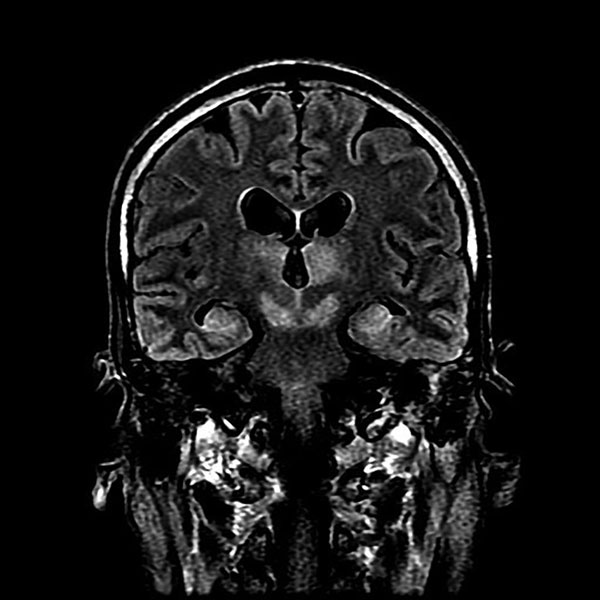Volume 24, Number 1—January 2018
Research
Japanese Encephalitis Virus Transmitted Via Blood Transfusion, Hong Kong, China
Figure 2

Figure 2. Magnetic resonance imaging of brain of index patient 66 days after double lung transplantation, Hong Kong, China. Coronal FLAIR (FLuid Attenuation Inversion Recovery sequence) image of the head at the level of the lateral ventricles, thalamus, and midbrain shows high signal at bilateral thalamus, midbrain, and medial temporal lobes.
1These authors contributed equally to this article.
Page created: December 19, 2017
Page updated: December 19, 2017
Page reviewed: December 19, 2017
The conclusions, findings, and opinions expressed by authors contributing to this journal do not necessarily reflect the official position of the U.S. Department of Health and Human Services, the Public Health Service, the Centers for Disease Control and Prevention, or the authors' affiliated institutions. Use of trade names is for identification only and does not imply endorsement by any of the groups named above.